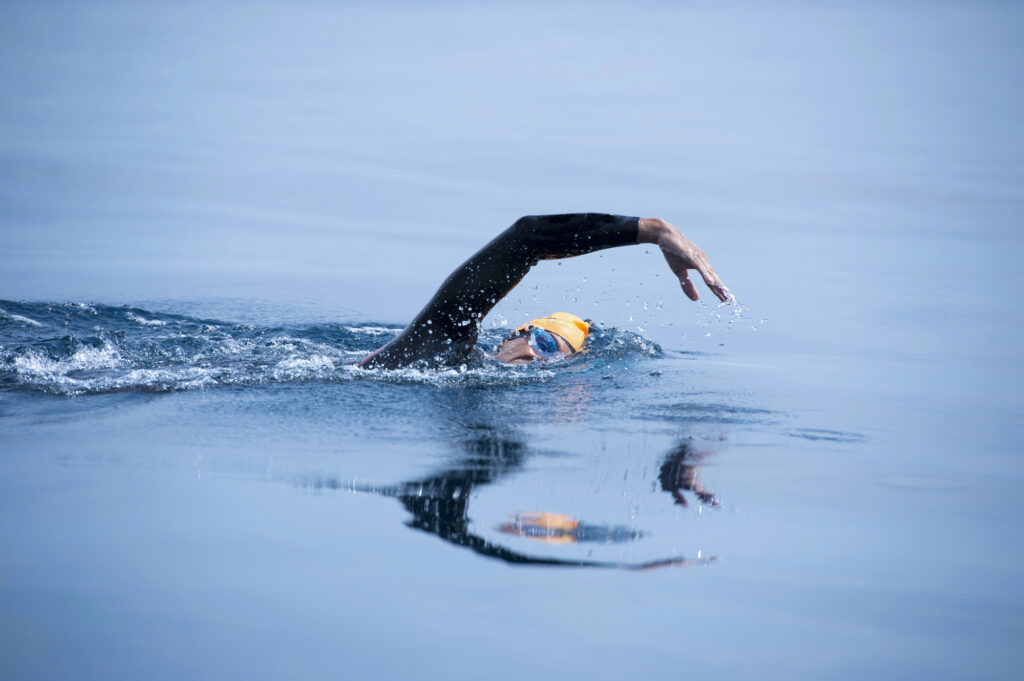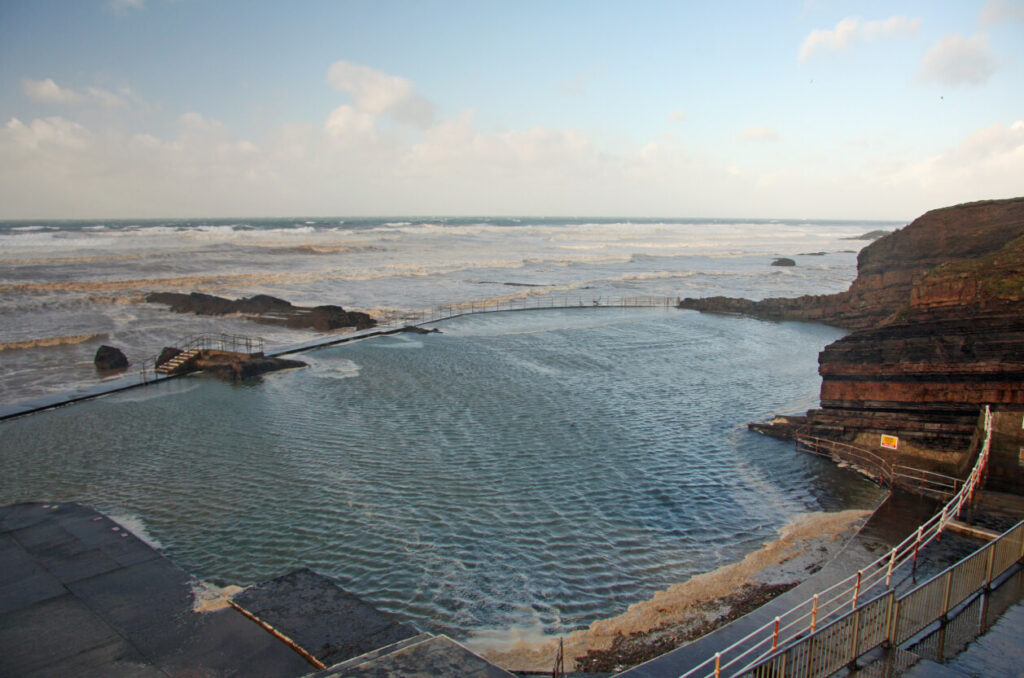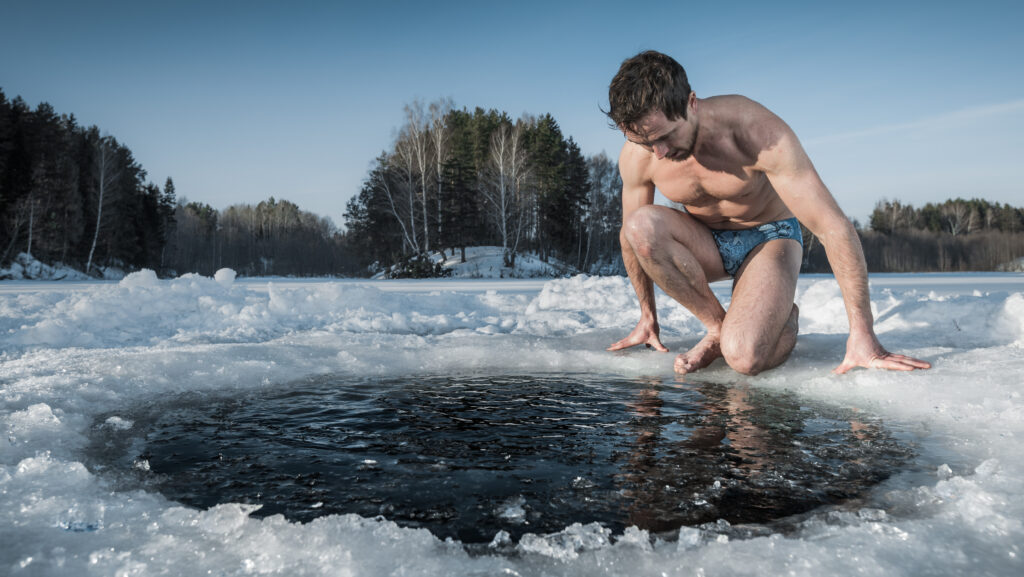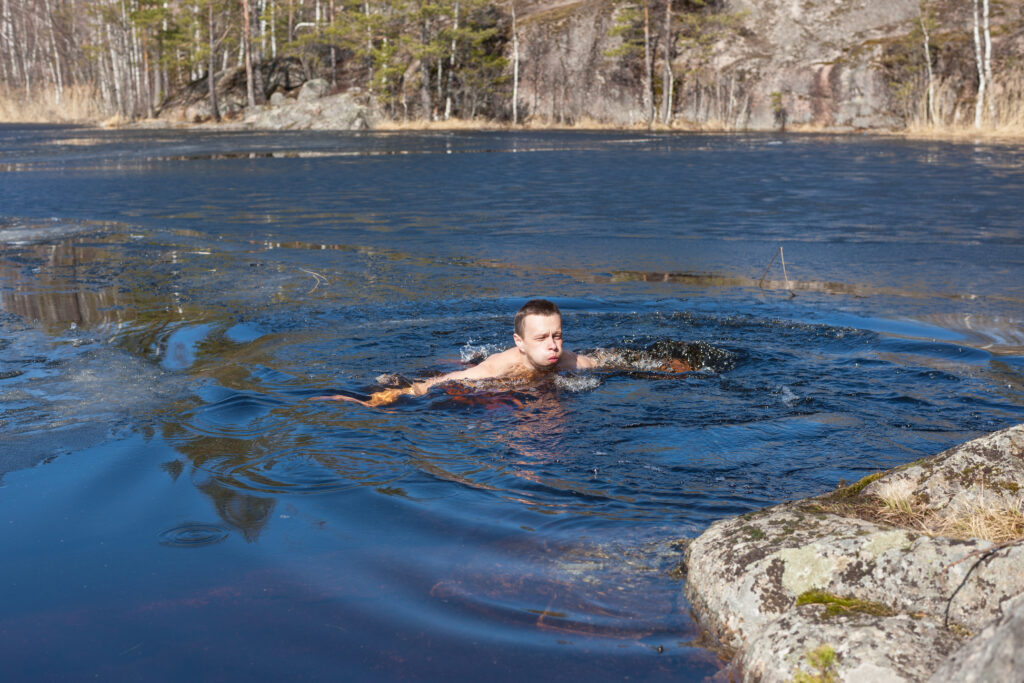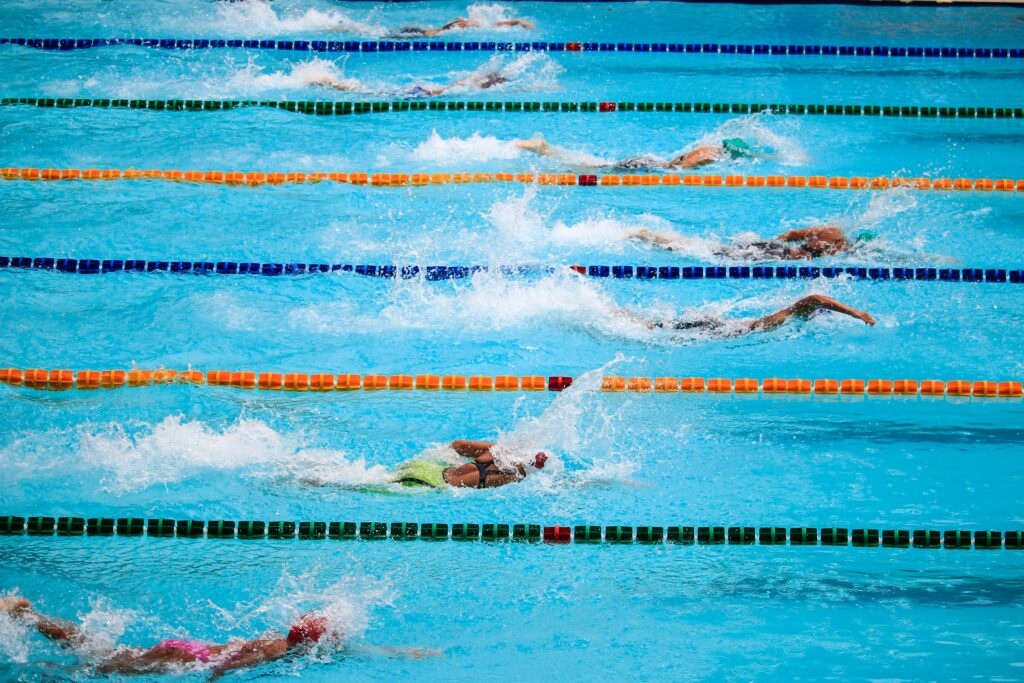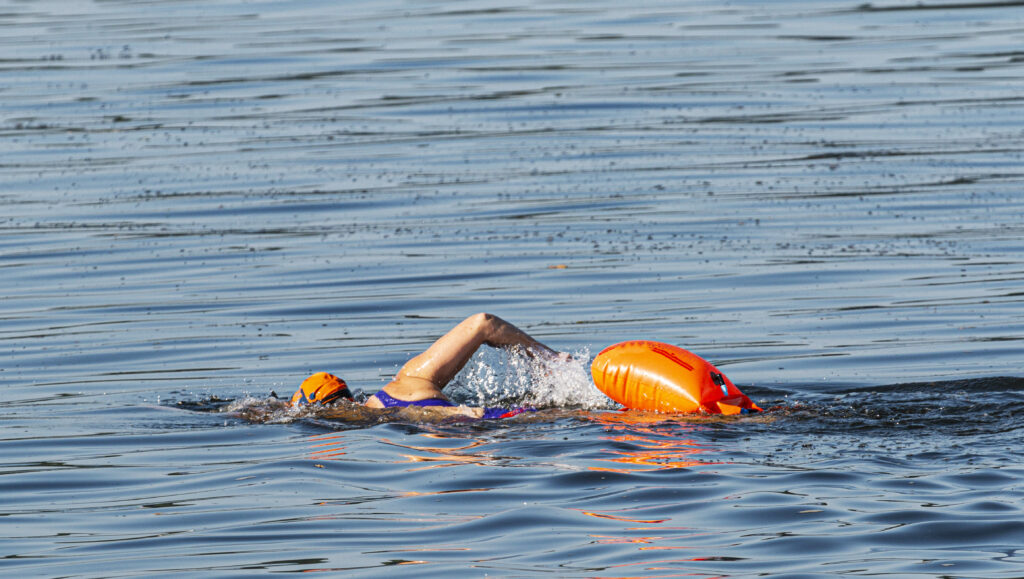The concept of a swimming marathon certainly exists and has come to represent one of the most enduring and physically demanding challenges in aquatic sports. Much like its terrestrial counterpart, a swimming marathon pushes athletes to cover long distances, but instead of roads or trails, participants traverse vast stretches of open water. The standard distance for marathon swimming, as recognised in the Olympic Games, is 10 kilometres, a journey that not only tests physical endurance but also requires mental fortitude and tactical acumen to navigate dynamic conditions such as currents and water temperatures.
While the Olympic marathon swim is fixed at 10 kilometres, marathon swimming, in general, can extend to various distances beyond this benchmark. Events can range from any distance over 10 kilometres and extend to as much as 80 kilometres or more, catering to the elite level swimmers who aim to set records in long-distance swimming. These events take place in diverse open-water environments including seas, lakes, and rivers, each presenting its own set of challenges. Through British Swimming, one can appreciate that such competitions may happen in locations with historical significances, adding to the rich cultural dimension of the sport.
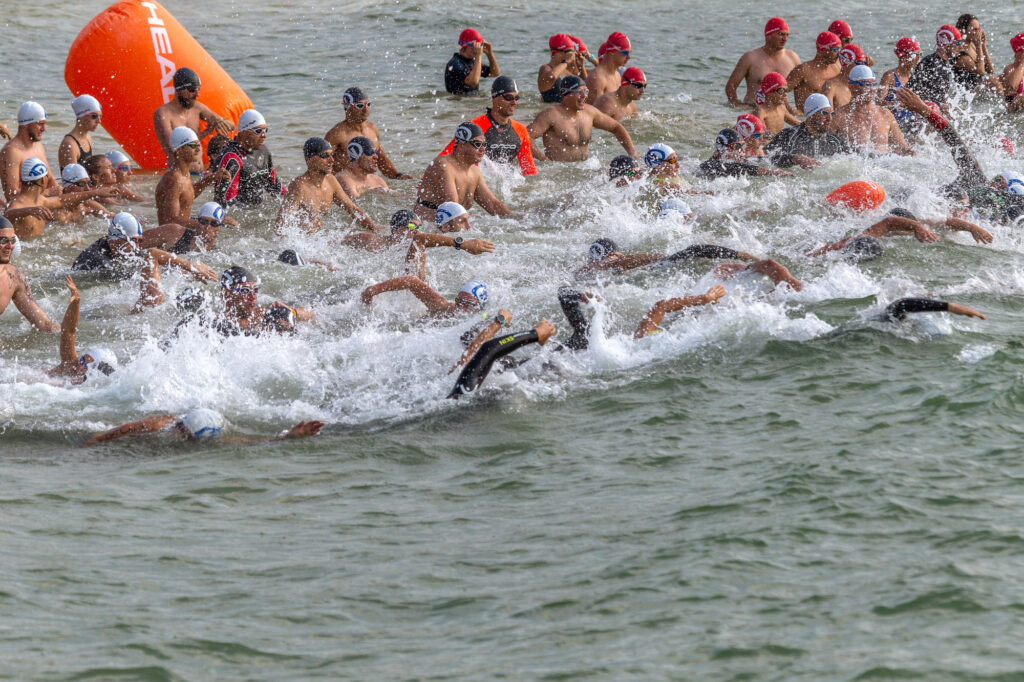
Marathon Swimming Overview
Marathon swimming is a test of endurance, skill, and mental fortitude, distinguished by its long-distance open water challenges.
Definition and Origins
Marathon swimming refers to a category of open water swimming where the distances covered are considerably longer than those found in traditional pool competitions. Historically, the term finds its roots in the sheer length of the event, reminiscent of a land-based marathon. Distances can vary but, for official competitive purposes such as those recognised by the International Olympic Committee, a marathon swim covers a 10-kilometre stretch of open water. These events can conjure images of the early 20th-century swims across the English Channel, a daunting 21 miles at its narrowest point.
Distinctive Characteristics
Physically, a marathon swim presents unique conditions vastly different from pool swimming. Swimmers must navigate through variable natural elements, including fluctuating temperatures and unpredictable currents over a course that equals approximately 6.2 miles. The open environment mandates a swimmer to adjust to these dynamic factors continually. As a sport, marathon swimming requires not only physical endurance but also strategic planning and psychological resilience.
More information on marathon swimming
Major Marathon Swims
Marathon swimming encompasses a series of long-distance, open water events that often test the limits of human endurance. These events occur in various prestigious locations and can be seen as the aquatic equivalent of a running marathon.
Iconic Events and Locations
The English Channel is perhaps the most famous marathon swim. Spanning approximately 34 kilometres, it represents a daunting challenge due to its cold temperatures and busy shipping traffic. Successful crossings are a prestigious achievement in the marathon swimming community.
Swimmers also face the might of the Catalina Channel in Southern California, which is around the same distance as the English Channel. The swim from Catalina Island to the mainland is known for its clear, deep waters and the potential for encountering marine wildlife.
In contrast, the Manhattan Island marathon swim offers a unique urban backdrop. This 48.5-kilometre circumnavigation of the island takes swimmers through the heart of New York City, showcasing famous landmarks such as the Statue of Liberty and the Brooklyn Bridge.
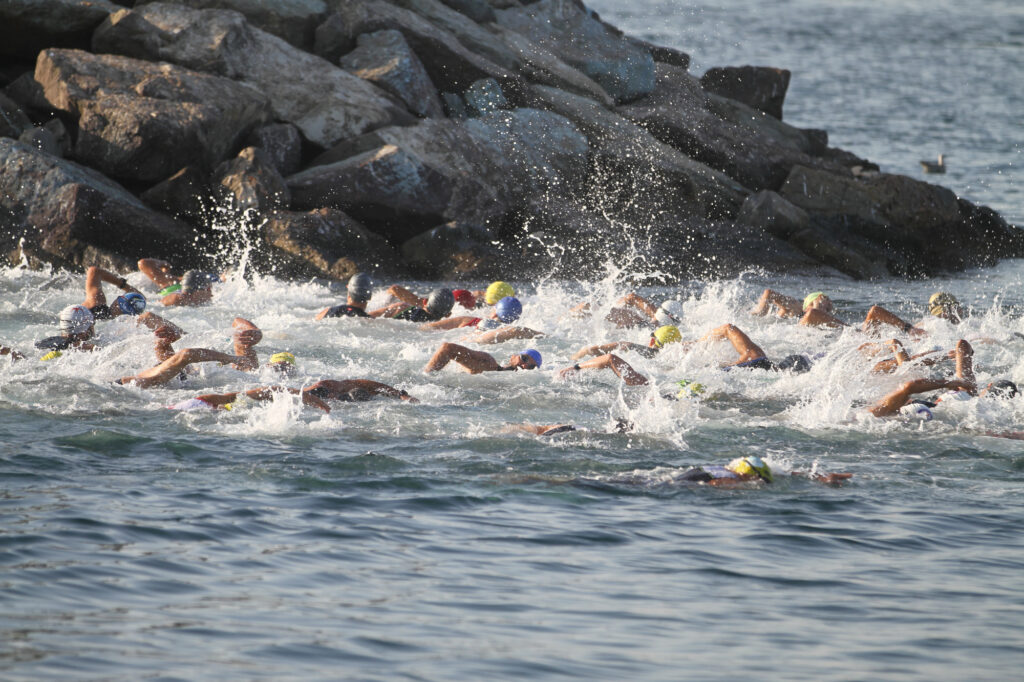
Triple Crown of Open Water Swimming
Channel Swimming is a term often associated with the Triple Crown of Open Water Swimming, which is an esteemed title awarded to swimmers who complete three renowned swims: the English Channel, the Catalina Channel, and the circumnavigation of Manhattan Island. Achieving the Triple Crown is seen as one of the ultimate tests of a marathon swimmer’s prowess and resilience.
The Catalina Channel swim is a crucial part of this celebrated trio. Swimmers traverse the water between Catalina Island and the coast of Southern California, where they often face variable ocean conditions and a demanding swim distance, testing both physical and mental stamina.
New York City’s Manhattan Island swim not only challenges athletes with its distance but also demands acclimatisation to the varying water temperatures and busy boat traffic while navigating the island’s perimeter. Achieving success in these swims cements an athlete’s status within the global marathon swimming community.
Rules and Regulations
Marathon swimming is governed by specific rules and regulations to ensure fairness, safety, and conduct. These rules are set by authoritative bodies and are designed to maintain the integrity of the sport.
FINA and Official Competitions
The Fédération Internationale de Natation (FINA), known as World Aquatics, is the international federation recognised by the International Olympic Committee for administering international competitions in water sports. Here are some key rules outlined by FINA for marathon swimming at official competitions, including the World Aquatics Championships:
- Swimmers must complete a set course, typically 10km, in open water environments such as seas, rivers, and lakes.
- The use of wetsuits is only permitted if the water temperature is below 20 degrees Celsius.
- Drafting is allowed, where a swimmer may swim close behind or beside another to conserve energy.
- Physical contact is permitted but must not impede the progress of other swimmers.
Safety and Conduct
Safety is of paramount importance in marathon swimming, and a range of measures are implemented to protect the athletes:
- Swimmers are accompanied by support boats and kayakers to manage risks such as exhaustion, hypothermia, or injury.
- A comprehensive understanding and adherence to the rules of marathon swimming are a pre-requisite for all participants.
- Sportsmanship is expected at all times, and unsporting behaviour can lead to disqualification.
These rules and guidelines form the backbone of marathon swimming, ensuring a consistent and secure environment for competitors worldwide.
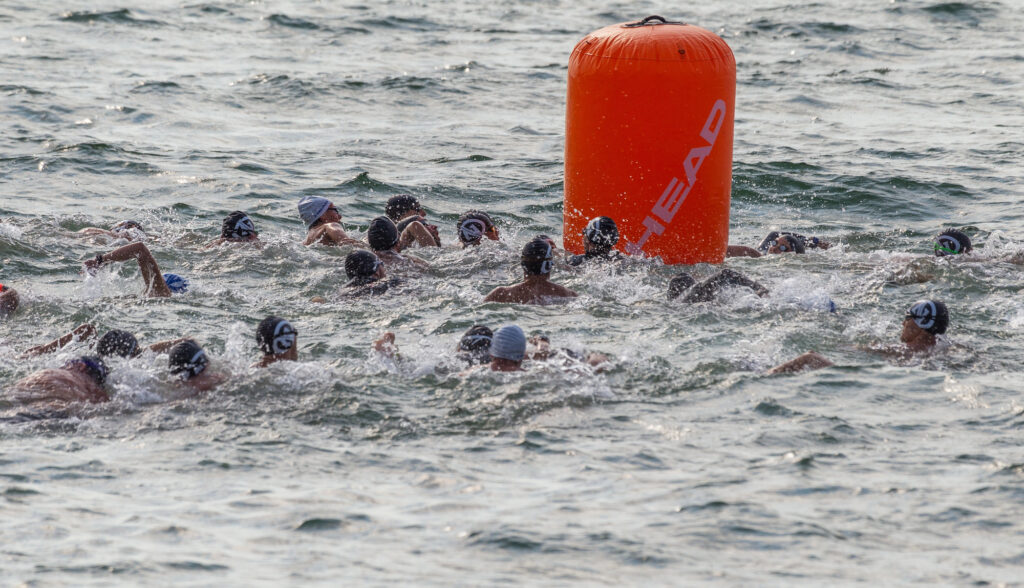
Preparing for a Marathon Swim
Before attempting a marathon swim, one needs a robust training plan focused on both physical and mental preparation, alongside a nutritional strategy that provides sustained energy for the endurance required.
Training and Conditioning
To prepare for a marathon swim, which is typically a distance of about 10 kilometres or more, one must cultivate a supreme level of physical condition and endurance. Swimmers should begin training months in advance, gradually increasing their distance to build endurance. It’s essential to include open water training, as it differs significantly from pool swimming. Training in a variety of conditions can help swimmers acclimate to changing water temperatures and currents. Moreover, incorporating drills to improve technique and efficiency in the water is crucial. To develop mental strength, swimmers are advised to undertake increasingly longer swims, which aids in mental acclimation to long periods of solitary swimming.
Nutrition and Strategies
Nutritional strategy is of equal importance as physical training when it comes to marathon swimming. One should consume a balanced diet with an emphasis on carbohydrates for energy, proteins for muscle repair, and fats for long-term fuel. Swimmers must also practice their feeding routine during training swims to avoid gastrointestinal discomfort on race day. Hydration strategy is as crucial, considering the propensity for deceiving hydration levels during lengthy swims. Swimmers should develop a schedule for intake of fluids and energy gels or snacks, which can be tested and adjusted during training swims.
Environmental Factors
Marathon swimming events take place in various bodies of water including lakes, rivers, and seas. Swimmers must adapt to the inherent challenges posed by currents, water conditions, and temperature.
Dealing with Natural Challenges
When a swimmer takes on the natural environments of lakes, rivers, or seas, they encounter various obstacles. Strong currents can greatly influence the time it takes to complete a marathon swim. Tides play a crucial role as well, especially in sea-based events, making the swimmer’s navigation more complex. Cold water also presents a significant challenge, as it can lead to hypothermia if swimmers are not adequately prepared or wearing proper attire.
Certain locales may harbour jellyfish, increasing the risk of stings that are not only painful but can also be dangerous, affecting a participant’s ability to continue. It is essential for swimmers to familiarise themselves with such challenges and plan accordingly to mitigate risks.
Optimal Swim Conditions
On the other side of the spectrum, there exist optimal conditions that marathon swimmers aim for. The gold standard in water temperature for marathon swimming is typically between 20°C to 26°C. These temperatures allow swimmers to exert themselves for prolonged periods without the serious risk of hypothermia associated with colder temperatures or overheating in excessively warm waters.
Calm water conditions are preferred as they prevent the onset of fatigue brought on by battling against waves and choppy waters. The absence of strong tides and currents allows for consistent pacing and more efficient energy use throughout the course of the swim. Furthermore, clear water improves visibility, which enhances safety by allowing swimmers to better navigate and avoid potential hazards.
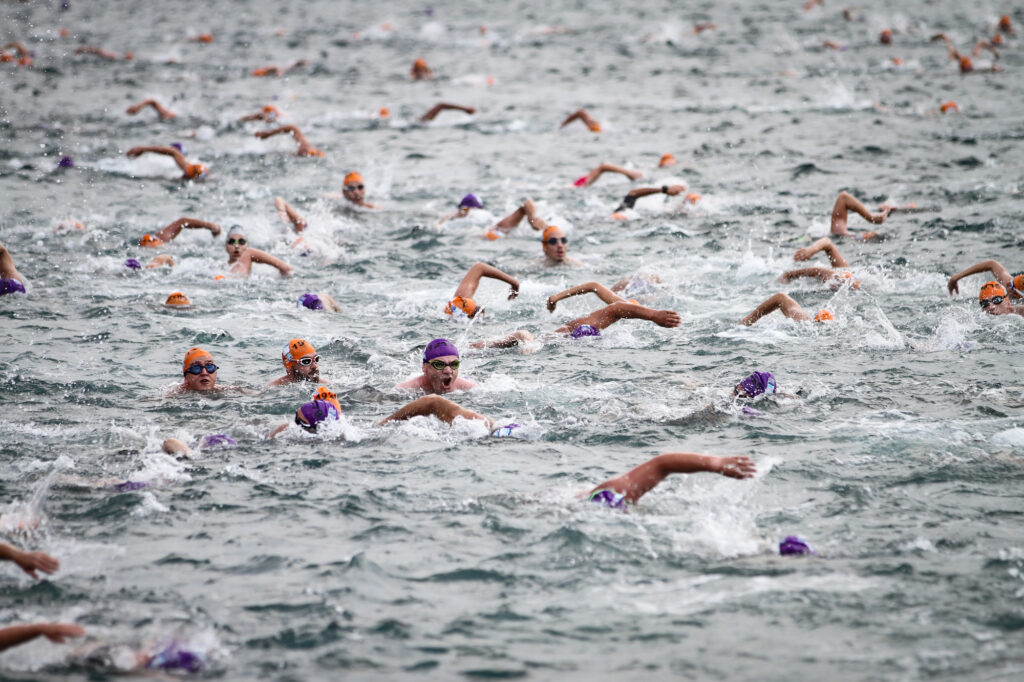
Marathon Swimming in the Olympics
Marathon swimming has cemented itself as a rigorous 10km open water race in the Olympic Games, challenging athletes with the unpredictable conditions of natural water bodies.
History and Milestones
Marathon swimming made its inaugural Olympic appearance in the 2008 Beijing Games. This long-distance discipline takes place in open water environments such as seas, rivers, and lakes, rather than the traditional pool setting. Athletes must navigate not only the vast distance but also contend with variable elements like water conditions and weather, making it a substantial test of endurance and strategic acumen.
Notable Olympian Swimmers
Several swimmers have made their mark in the marathon swimming event at the Olympics. Sharon van Rouwendaal from the Netherlands emerged triumphantly in the Rio 2016 Olympics, achieving gold in the women’s 10km event. On the men’s side, Ferry Weertman, also from the Netherlands, secured gold in the same Games, underscoring Dutch dominance in marathon swimming. Gregorio Paltrinieri, an Italian swimmer known for his prowess in pool events, has also transitioned successfully to open water, illustrating the depth of talent in the sport. The 2008 gold medallist, Maarten van der Weijden from the Netherlands, is another prominent figure who overcame leukemia to achieve his Olympic victory. Marc-Antoine Olivier of France has secured a podium position, showcasing the competitive spirit prevalent in this demanding Olympic event.
Gear and Equipment
Marathon swimming demands a specific set of gear to ensure the swimmer’s comfort, safety, and compliance with regulations. The essential equipment varies from the basic swimwear to accessories designed for open water endurance events.
Essential Marathon Swimming Gear
- Goggles: Marathon swimmers require high-quality goggles for clear visibility and protection against waterborne irritants. It is advisable to select goggles with a comfortable fit and anti-fog properties to maintain clear vision throughout the swim.
- Wetsuit: Depending on the water temperature, a wetsuit may be necessary to retain body heat during lengthy swims. Swimmers should choose a wetsuit that allows for a full range of motion and minimises drag in the water.
- Swimming Pools: While not gear per se, access to swimming pools is crucial for training. Pools offer a controlled environment for swimmers to build endurance and perfect their technique before transitioning to open water challenges.
It is important for marathon swimmers to familiarise themselves with the equipment through consistent training to ensure peak performance during events.
History’s Trailblazers
Marathon swimming has a rich history, marked by remarkable individuals who have set precedents in open-water endurance events. These swimmers have not only pushed the limits of human stamina but have also left a lasting impact on the sport.
Pioneers of Marathon Swimming
The narrative of marathon swimming is replete with tales of extraordinary individuals. Captain Matthew Webb was the first person to swim across the English Channel in 1875, traversing from Dover to Calais without the aid of artificial swim aids. His historic 21-mile swim took nearly 22 hours to complete and set the precedent for long-distance swimming challenges.
Another notable figure is Gertrude Ederle, who, in 1926, was the first woman to swim the English Channel. Remarkably, she not only managed to accomplish this feat but did so faster than any man before her, setting a then-world record with a time of 14 hours and 34 minutes. Her triumphant crossing significantly advanced women’s marathon swimming.
Record-Setting Swims
Marathon swimming has consistently been a stage for record-setting swims that have captivated the attention of the world. Swimmers from various regions, including Europe, Ireland, New Zealand, Australia, and Africa, have contributed to the sport’s international tapestry.
For instance, the record for the fastest English Channel crossing has been continuously sought after, with swimmers from France and elsewhere taking up the challenge. Achieving a world record in marathon swimming is a testimony to both physical endurance and mental fortitude, often involving swims of vast distances in unpredictable open-water conditions.
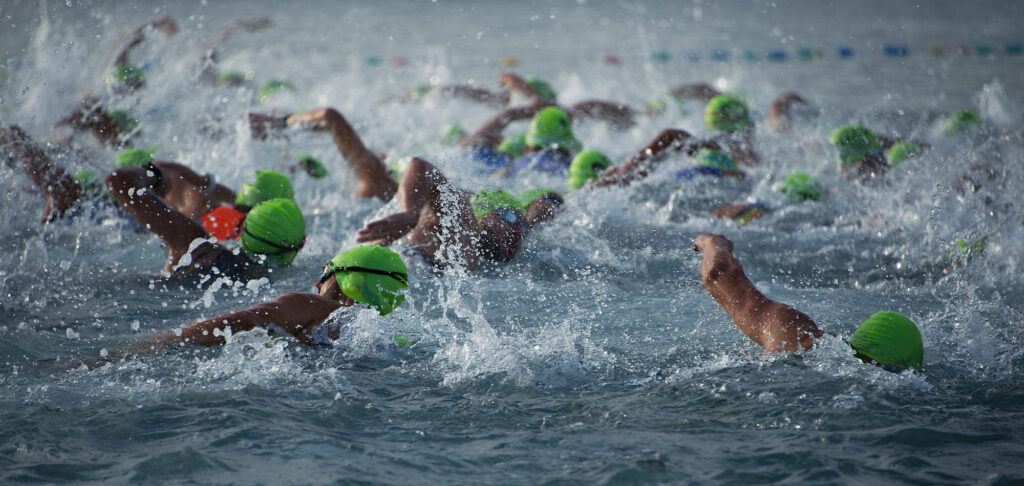
Community and Organisations
Within the realm of swimming marathons, various organisations play pivotal roles, from setting standards to fostering a sense of community among swimmers.
Governing Bodies and Groups
The Marathon Swimmers Federation (MSF) is instrumental in the sport of marathon swimming, providing a set of standards and guidelines for those looking to undertake a solo, unassisted open-water marathon swim. The federation’s rules can be applied to any swim by individuals where no local governing body is present, aiming to preserve the traditional spirit and fairness of these challenging endeavours.
Open-water swimming as a discipline, which includes marathon swimming, is governed by different bodies at various levels, from local clubs to global organisations. At the highest competitive levels, such as Olympic events, the standard distance for marathon swimming is 10km, highlighting the challenge of both physical endurance and mental strength within a dynamic natural environment.
The British Swimming organisation supports marathon and open-water swimming within the UK, hosting races varying from 1km to 80km, across seas, lakes, rivers, canals, and reservoirs. Integral to the growth of the sport, these organisations not only set competition standards but also ensure safety and fair play for all participants.
Frequently Asked Questions
The marathon swim is a term solidified in the endurance sports world, denoting an extended-distance swim challenge. With specific acknowledged distances and records, this aquatic discipline tests both physical stamina and mental fortitude.
What is the recognised distance for a marathon swim?
The internationally recognised distance for a marathon swim is typically 10 kilometres, although distances can vary greatly in non-competitive and local events.
How long is a half marathon swim?
A half marathon swim is commonly understood to be half the distance of a full marathon swim, making it approximately 5 kilometres long. However, official distances can vary depending on the organising body of the event.
Are there world records for marathon swimming, and what are they?
Yes, there are world records for marathon swimming, which vary according to the distance and category of the swim. These records are overseen by recognised swimming bodies and updated when new records are established.
Which events are included in marathon swimming competitions?
Marathon swimming competitions can include a range of events, typically from 1 kilometre up to 25 kilometres and more, depending on the level of competition and the organising body.
What is the standard distance for marathon swimming in the Olympic Games?
The standard distance for marathon swimming in the Olympic Games is 10 kilometres, a challenging course that takes place in open water environments such as seas, rivers, and lakes.
Can you detail what an ultra marathon swim entails?
An ultra marathon swim involves distances that exceed the standard marathon swimming length. These events can often be upwards of 10 hours in duration, and can stretch much further than the 10-kilometre mark, requiring extraordinary levels of endurance.

